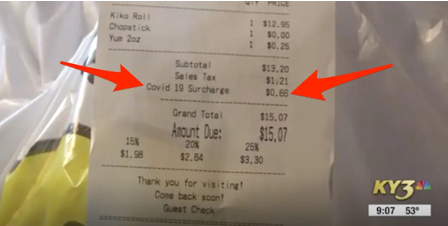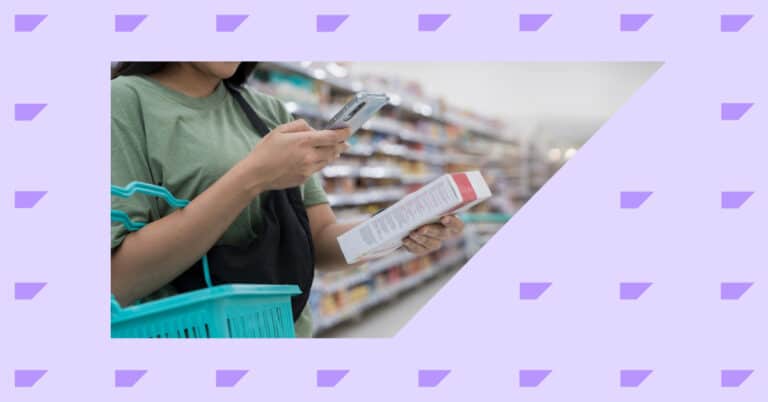If we marketers thought it was tough connecting with consumers before the Coronavirus pandemic, we’re in for a real surprise in its wake.
No brand has gone unscathed nor has the consumer market. 100,000 businesses across the U.S. have closed their doors permanently as a result of the pandemic, a staggering number by any standard.
Everything and everyone is now emerging from its wrath. As tectonic plates shift beneath our feet, change is just about the only thing we can be sure of in this current climate.
However, where there’s destruction, there’s also opportunity. There are three big retail trends emerging in the wake of COVID-19 that you can hop on:
- Consumers have been forced to find — and will stick to — the easiest, quickest, most efficient method of buying… and as of late, that means online.
- Consumer behavior may forever be altered in more profound ways than we’ve ever seen in terms of expectations and standards.
- With so many small businesses closed for good, there will be less competition in most large markets and consumer choice may be reduced.
Right now, for better or worse, it’s a sort of survival of the fittest as the elimination of many small businesses continues to rock middle America.
So what does it take to survive? Just as in nature, surviving this latest period of turmoil will require adaptation and acclimation to a new selling environment entirely.
Creating relationships and loyalty among this new breed of buyers means thinking like the people who put your food on the table. If ever there was a time to put on your consumer hat, it would be now.
No longer can we get away with just spouting off “customer-centric” mantras or boasting about the best customer experience — you’ll have to literally do it, make it, provide it… or face that aforementioned fate none of us can afford.
The ongoing viability (and profitability) of your business may well depend upon how well you respond to what’s going on by thinking like your customers.
Let’s look at three ways you can do so.
1. Be easy, quick, and efficient
The goal should have always been to make things as seamless as possible for customers. But quickness, ease, and efficiency are taking on new meaning as players like Amazon and Apple set new standards that everyone must compete with.
Ease means simplicity and transparency
Consumers are being bombarded with information from every angle, especially right now. They’re talking with friends, family, and colleagues not just about business, but about topics including health, financial stability, and the present geopolitical climate.

A shift to simplicity might be one way to capture attention in an overly saturated space. Why not change up your old or overly long marketing emails? Why not experiment with shorter, more catchy copy?
Transparency is also big. Some restaurants, for instance, began charging an extra “COVID-19” fee. An explanation and acknowledgement of these kinds of changes is more than important; it’s vital for ongoing relationships with customers.
Quickness means timeliness
You don’t have to offer same-day delivery to be quick. Speed is still a somewhat relative thing, and no one knows the expectations and perceptions of your customers like you do. What’s most important now is to stay true to your word.
During a time where misinformation is pervasive within the public sphere and the news media, trustworthiness and timeliness is an advantage. That’s something you can capitalize on.
If you espouse a 3-5 day fulfillment period, ensure operations remain in line to capitalize. Right now, transparency about COVID-19 fees or delivery commitments is an optimal way to build trust with customers.
Efficiency means reducing steps needed
We’ve seen how overly complicated signup, checkout, or customer service touch points could cost you a customer. The smaller brands that leap-frog larger competitors during this shift to online shopping will offer radically shortened, more condensed experiences with reduced steps to action needed by the consumer.
Can you turn that two-step signup form into one? Can you give that registration page two fields instead of six? This is the time to consolidate customer touch points as much as possible.
Discover the 4 Pillars of Personalization Used by Top Brands to Accelerate Business Outcomes
2. Eliminate friction from the customer experience
As alluded to, this is not the time for unnecessary charges, petty fees, or repetitive tasks.
Anything perceived by a customer as pointless, too long, too jargony, too salesly, or overly intensive will be met with divided attention at best and an X-out, abandoned cart, or lost buyer at worst.
It’s surprising we have to say it in 2020, but the burden should never be on the customer. If you need some information or confirmation to complete a transaction or shipment, then ask politely and quickly.
This is not the time to make unreasonable requests or demands of your customers… you need them now more than ever. Brands who maintain a service-to-customers mindset will thrive while those who don’t will nosedive.
|
I made a relatively expensive online purchase about two months ago, and was eager to start using my products within 5-7 days, as promised on the checkout page. One product took more than three weeks to arrive. Another contained incorrect items that were not what was ordered, and one was returned to the shipper by no fault of my own. What was worse, the company asked me to pay the $15 re-ship fee, seemingly unaware of the circumstances of my transaction history. If you can remove friction like this in the CX (and if you have centralized customer data to see the history of each individual), do so. The experience left a sour taste in my mouth, and the impression left a mark. |
We’re all consumers first and marketers second, not the other way around. It should never be acceptable to treat your customers in a way you would not appreciate as a buyer yourself. In fact, now is the time to go over the top with kindness and generosity. Giving when everyone else is taking all the business they can get right now will make you stand out from the rest.
3. Consumer choice and competition is changing
Many consumers are already brand-agnostic. If I had a quarter for every time I heard “you can get it on Amazon for like $10,” I would be rich. Your competition may be diminishing in your industry, but any wise e-commerce team knows its real competition is the booming online marketplaces like Amazon.
With less brands to choose from in a given space, any consumer can just go to Amazon or eBay at any time and get anything. How can you combat this shifting trend? There are a few ways.
1. In the subscription economy, brands who can collect repeating or recurring revenue have an advantage.
How can you move into the subscription economy? How can you shorten time between purchases?
2. Digitally-led strategies are more important than ever.
Unless you do more than 50% of your business in-store, now is the time to marshall even more resources to the online sphere because that’s where everyone will be.
3. Continue carving a niche.
Amazon and other online marketplaces are somewhat commoditized — something you can exploit by offering unique value for consumers. The online shopping experience on Amazon or eBay or Alibaba isn’t bad; you can turn what you lack in resources in comparison to these giants into an advantage.
This is the time to really show consumers you know them… cultivate even more intimate relationships than ever. For example, there’s no way a giant retailer is going to take the time to personally write or reach out to their customer with actual 1:1 messages, but you truly can.
Conclusion
Thinking like your customers is the best way to get started regaining your edge. Yes, things are changing, and yes, in some ways, in a more difficult direction. But only for those who aren’t prepared for a major shift to the online, digital economy.
Maintaining a focus on personalization and customer care no matter what happens economically will always behoove your business.
Handpicked Related Content:
- Customer Conversion: Influencing Purchase With Data-Driven Personalization
- Improved Customer Experience Through Increased Personalization
- How Two-Way Communication Leads to the 1:1 Personalization Your Customers (and Your Brand) Truly Want
Looking to Build 1:1 Marketing into Your Digital Strategy? Start with the 4 Pillars of Personalization.












